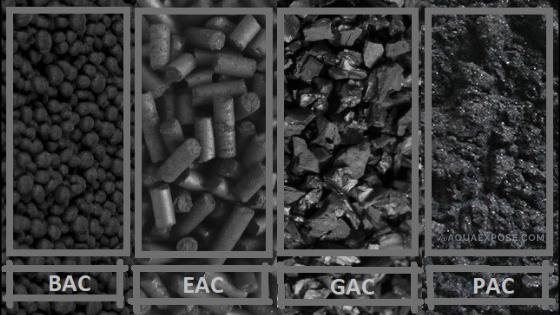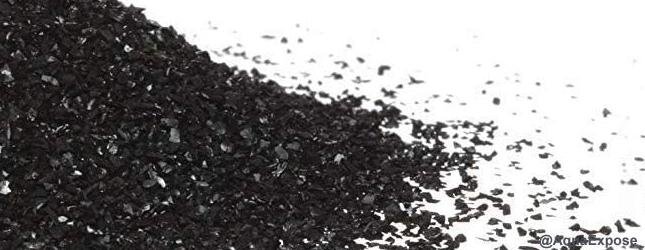If you are an aquarium owner or wish to keep an aquarium in the future, then you would know that having an aquarium needs a lot of care and maintenance. There are lots of do’s and don’t. But one common question an aquarium owner might have is “Do I need carbon in my aquarium filter?“
Well, not a necessity, but it definitely has some favorable effects regarding the tank water. Since we are talking about fish tanks, the water should be suitable for the residents to live comfortably. Don’t you think?
But before that, we need to know the details about activated carbon and how it works.
What is Activated Carbon & How Activated Carbon Work?

Activated carbon is a specially treated charcoal with tons of little pores. As it is of carbonaceous origin, you can also call it activated charcoal, active coal or char, active carbon, etc. They can be created by both physical and chemical activation.
The coal materials are heated at extreme temperatures, resulting in a large surface area with numerous mini pores. These tiny pores can lock in a large number of waste products from both air and water, for which activated carbon is vastly used for chemical filtration.
They remove chlorine, tannins which discolor the water, phenols, and some medicines from water. For this, activated carbon is used in water tanks to keep the aquatic surroundings clear and sound. Interestingly, an activated charcoal filter functions in two ways, absorption, and adsorption.
In the absorption process, the organic materials get stuck in those tiny gaps of the carbon, preventing them from mixing in the environment. While adsorption happens because of the big surface area with ample organic binding zones. Through these sites, various chemicals bond with the carbon and get trapped in them.
What Can Not Activated Carbon Do?
There are several things that activated carbon can not obtain. You can not expect it to eliminate all types of pollutants from the water. It does not remove ammonia, nitrite, or nitrates. Basically, any nitrogen elements are immune to its effect. Hence using it in a fish tank with ammonia might not work at all.
Like ammonia, heavy materials such as lead or copper, and iron also are not affected by this carbon. So you need to use a water conditioner before applying it. Once fully used up, you can not recycle activated carbon by any means.
The reason for this is the heat therapy it requires, which can not be attained in any normal place. The ‘wash and reuse’ trick also won’t work because it would be already plugged with pollutants.
How Long Does Activated Carbon Last?
The mechanism of activated carbon is to trap the pollutants in its tiny surface pores. The more these openings get filled up with chemicals, the more it loses their ability to filter. You have to change it on a periodic basis as after a time it becomes ineffective. To maximize its use of it, put it following the automated filter setup of the aquarium.
Replacing it after every thirty days is normally enough. But it also depends on the water condition. Tank water has to be clean for activated carbon to work. If you see the watercolor is changing to a yellowish one, you will know it’s about time. And if your tank water is already dirty before putting carbon in it, it most definitely won’t work.
What Are the Different Types of Activated Carbon & Which is Right for Your Aquarium?
You can find several types of activated carbon depending on their sizes and production techniques. Each of them is used in specific circumstances like medicine, air or water purification, filtrations, etc. Some of the most common types are-

- BAC– Bead Activated Carbon
- EAC– Extruded Activated Carbon
- GAC– Granular Activated Carbon
- PAC– Powder Activated Carbon
Based on the raw materials, they are also made from Bituminous coal, peat, wood, bamboo, coconuts, etc. Powder Activated Carbon particles are smaller in size with a large outer surface. Whereas Granular Activated Carbon is larger in size with a smaller exterior.
Normally a broad surface area with microscopic pores is better for binding with pollutants. But if the carbon is too big with too many small-sized pores, then the chemicals will not be able to infiltrate them. Whereas, with a relatively small surface area with big-sized pores, pollutant infiltration will be possible but to a smaller extent.
Therefore, the carbon material should have a mixed size of pores in it. For aquariums, Granular Activated Carbon made of Bituminous coal is the best pick. While activated carbons are used for cleaning both air and water surroundings, the Bituminous GAC is specially designed to remove toxins from water.
Even in regular water filters, which we use to purify drinking water, you will find GAC in the filter tube. The porous surface of this type absorbs and adsorbs the toxin, effortlessly cleaning the water and clearing the odor it might have.
Other types of activated charcoal do not possess such an ability. Moreover, they can jam your tank water rapidly. Also, try to avoid using carbon filters with phosphate in freshwater aquariums, algae can infest your aquarium if present.
Which is The Best Activated Carbon for Your Filter?

Most branded filters already come with carbon attached to it, but you can always buy from a different company to suit your budget. Choosing a specific brand of carbon can be a little bothersome as numerous brands are available out there. For me, MarineLand BLACK Diamond Media Premium is the best choice considering the price and benefits. If you want to know more about this product, we have a review article for this Premium Activated Carbon
Check the latest price if you wish.
We also have a review article for MarineLand Black Diamond Media Premium.
However, you can not just add carbon to your aquarium filter. You have to keep them in a recyclable media bag like Fluval SPEC Carbon Filter Media ones. This bag is very easy to use, and it will keep the carbon fixed in one place, not letting any carbon particles out in the water.
Check the latest price if you wish.
Supper BONUS Product:
Usually, activated carbon can not eradicate ammonia or any nitrogen element from aquariums. But if you mix it with zeolite, like the Zeolite and Activated Carbon Blend, it will work wonders! Apparently, zeolite is good for absorbing ammonia.
Well, personally I can recommend MarineLand Zeolite & Activated Carbon Blend. Definitely, it works Wonder! You can try it.
Check the latest price if you wish.
We also have a review article for ZEOLITE Diamond blend from Marineland.
CAUTIONS!
Activated Carbon and Medication
Most aquarium owners use the medicine if any of their fish gets sick. But the presence of activated carbon will cancel out the effect of the medicine. As activated carbon absorbs the medicines from the tank water, your fish won’t be treated right.
So, before using any medication, get rid of the slightest bit of carbon from your aquarium. Once your fish gets better, you can add it ( Activated Carbon) again. In addition, it will remove the excess drug from the water.
Final Words
As we said earlier, activated carbon is not mandatory for your aquarium, if you are changing the water regularly. But for extra maintenance, you can certainly use it. While using it, make sure you have picked the proper one. Remember to change it after a certain period of time.
If carbon media is not well filtered, the carbon dust will get entrapped in the fish gill resulting in their death. To avoid such types of unfortunate occurrences, Use granular activated carbon instead of powdered carbon, and wash the filter bag with purified water before setting it in the aquarium.
Articles Are Suggested For You:
- Activated Carbone is under the group of Chemical Media. If you like to get more knowledge on Chemical Media and want to have some of the best product reviews, you may read this knowledge-based Roundup review.
- If you may also like to know more about which are the best Biological Media, click here to read the details. I hope you will surely like this knowledge-based Roundup Review.






